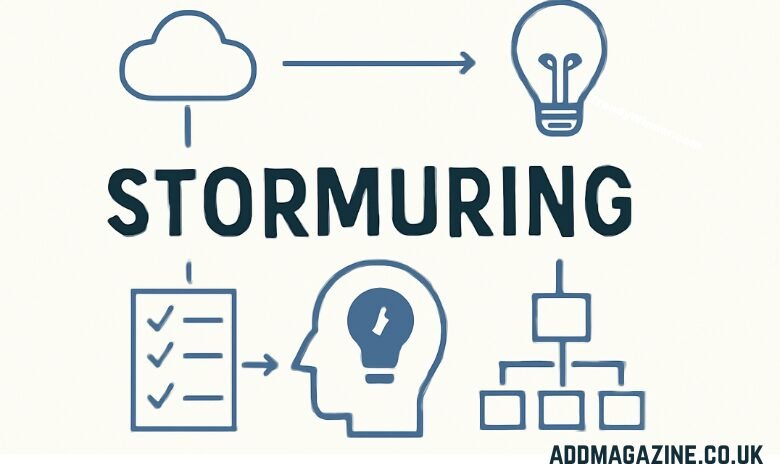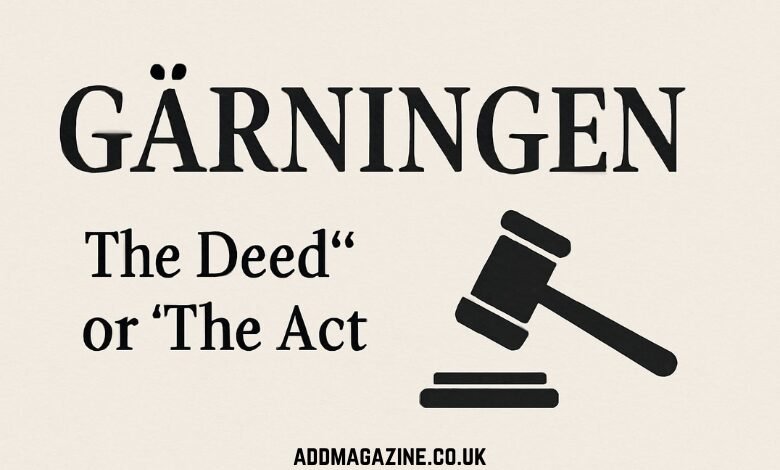In a world where creativity and innovation are paramount to success, the need for effective problem-solving methods has never been more important. The term “stormuring” might be new to some, but it represents a revolutionary approach to generating and refining ideas in a way that ensures their practicality and impact. Unlike traditional brainstorming, stormuring emphasizes structure, organization, and strategic thinking, turning raw ideas into actionable solutions. This structured creativity model is gaining traction across industries, making it an essential tool for leaders, innovators, and organizations alike.
In this article, we will explore the concept of stormuring, its significance, the step-by-step process involved, its various applications, the benefits it offers, challenges that may arise, and best practices to effectively implement it.
What Is Stormuring?
At its core, stormuring is a collaborative and systematic approach to problem-solving and idea generation. It goes beyond the rapid and unstructured nature of brainstorming. While brainstorming encourages free-flowing, often chaotic idea generation, stormuring combines the free exchange of ideas with a rigorous process of refinement, categorization, and actionable outcomes.
The term itself is a blend of “storm” (symbolizing the energy and creativity behind the process) and “muring” (suggesting a more structured, organized methodology). Unlike typical brainstorming, where the focus is on quantity, stormuring is about quality, practicality, and strategic implementation. It’s about distilling creativity into something that can be applied effectively.
Why Stormuring Matters
As businesses and organizations face increasingly complex challenges, innovation alone is not enough. Ideas must be structured in such a way that they can be transformed into actionable plans. This is where stormuring comes in—it helps organizations identify and refine the best solutions while maintaining a clear focus on practical outcomes.
In industries where decision-making needs to be both creative and strategic, stormuring allows for:
- Focused Idea Generation: By structuring the process, stormuring ensures that the ideas generated are not only creative but also aligned with the organization’s goals and objectives.
- Refinement: Instead of discarding less feasible ideas immediately, stormuring encourages the refinement and reworking of concepts to improve them.
- Actionable Outcomes: The ultimate goal of stormuring is to produce results that can be implemented, making it far more practical than traditional brainstorming techniques.
- Collaboration: It fosters a collaborative environment, ensuring that diverse perspectives are brought into the idea generation process, enhancing creativity and fostering innovation.
The Stormuring Process: Step by Step
To understand stormuring fully, it’s essential to break down the process into its core steps. Unlike brainstorming, which can quickly devolve into unstructured chaos, stormuring is about thoughtful engagement with each idea and strategic decision-making. Here’s how the process typically unfolds:
1. Define the Problem or Goal
Every successful stormuring session starts with a clear understanding of the problem at hand or the objective to be achieved. This step ensures that participants remain focused on the central goal and directs their creative efforts toward a specific outcome. Defining the problem involves:
- Understanding the key challenges.
- Clarifying the goals.
- Setting measurable objectives.
2. Idea Generation
This is the “storm” part of stormuring—encouraging participants to brainstorm without constraints. However, unlike typical brainstorming sessions, stormuring places emphasis on encouraging ideas that are not only creative but also aligned with the defined goals. The idea is to generate as many ideas as possible, free from judgment, but with the understanding that they will be refined later.
3. Categorization and Organization
Once the ideas are generated, they must be categorized into logical groups. This step involves analyzing the feasibility, relevance, and potential impact of each idea. It ensures that ideas are not just random but fit within the framework of the overall objective. This step typically includes:
- Grouping similar ideas together.
- Sorting ideas based on priority.
- Identifying overlaps or redundancies.
4. Refinement
The refinement phase is what sets stormuring apart from traditional brainstorming. Here, ideas are not discarded, but instead, they are refined and improved. This can involve:
- Tweaking ideas to make them more practical.
- Developing detailed action plans for the top ideas.
- Seeking input from stakeholders to enhance the ideas’ potential impact.
5. Prioritization
After refinement, the most viable ideas are prioritized based on factors like cost, time, impact, and alignment with organizational goals. This step helps decision-makers focus on the ideas with the highest potential for success.
6. Implementation and Action
Finally, the chosen ideas are turned into actionable plans. This step involves developing timelines, assigning responsibilities, and establishing key performance indicators (KPIs) to ensure that the ideas are executed effectively. Implementation requires clear communication and coordination among team members to ensure that the action plans are followed through successfully.
Applications of Stormuring
Stormuring is applicable in a wide variety of scenarios, from product development to strategic planning, and even marketing campaigns. Here are some key areas where stormuring can be effectively applied:
- Product Development: Stormuring is ideal for generating innovative product ideas while ensuring that those ideas are feasible and aligned with market demands.
- Strategic Planning: Organizations can use stormuring to develop long-term strategies by identifying opportunities and challenges while ensuring the strategic objectives are achievable.
- Marketing Campaigns: Creative marketing ideas can be developed and refined through stormuring, ensuring that campaigns are not only creative but also tailored to the target audience’s needs.
- Problem-Solving: When faced with a specific problem, stormuring helps teams generate multiple solutions, prioritize the best ones, and create a plan to resolve the issue.
- Innovation and Process Improvement: Stormuring is useful in industries where constant innovation is required. It allows teams to generate fresh ideas and find ways to improve existing processes.
Benefits of Stormuring
There are numerous benefits to using stormuring as a problem-solving method. Here are some of the key advantages:
- Structured Creativity: Stormuring allows teams to harness creativity while maintaining structure, ensuring that ideas are not only innovative but also actionable.
- Improved Collaboration: The process fosters collaboration, allowing individuals with different expertise and perspectives to contribute to the problem-solving process.
- Higher Quality Ideas: By refining ideas and focusing on feasibility, stormuring ensures that the ideas generated are of higher quality than those produced through traditional brainstorming.
- Faster Decision-Making: The structured approach enables teams to make decisions faster, as ideas are categorized, prioritized, and refined quickly.
- Strategic Alignment: Since the process begins with a clear understanding of the problem and objectives, the resulting ideas are more likely to align with the organization’s long-term goals.
Challenges of Stormuring
While stormuring offers numerous benefits, it is not without its challenges. Here are some common difficulties teams may face when implementing stormuring:
- Time-Consuming: The structured nature of stormuring can make the process more time-consuming than traditional brainstorming, especially in the early stages.
- Groupthink: Despite the collaborative nature of stormuring, there is a risk of groupthink—when participants conform to the dominant opinions in the group, stifling creativity.
- Resistance to Structure: Some individuals may be resistant to the structured approach of stormuring, preferring the free-flowing nature of traditional brainstorming.
- Difficulty in Refining Ideas: The refinement phase can be challenging, especially when participants have differing opinions on how to improve or develop an idea further.
Best Practices for Effective Stormuring
To make the most out of a stormuring session, here are some best practices to keep in mind:
- Set Clear Objectives: Clearly define the problem or goal at the start of the session to ensure that everyone is on the same page.
- Encourage Open Communication: Foster a collaborative environment where all ideas are valued, and participants feel comfortable sharing their thoughts.
- Limit Group Size: While stormuring encourages collaboration, it’s important to keep the group size manageable to avoid distractions and ensure everyone’s voice is heard.
- Use Facilitators: A facilitator can guide the stormuring process, ensuring that it remains structured and that all steps are followed effectively.
- Follow Through: The final step of stormuring is implementation. Ensure that ideas are turned into action plans and that progress is regularly tracked.
Conclusion
Stormuring is more than just a buzzword—it’s a powerful tool for problem-solving and innovation. By combining creativity with structure, it helps teams generate high-quality ideas that are not only practical but also aligned with organizational goals. While it requires more time and effort than traditional brainstorming, the results are worth it. By following the structured steps of stormuring, teams can make better decisions, foster collaboration, and achieve their objectives with greater efficiency.


